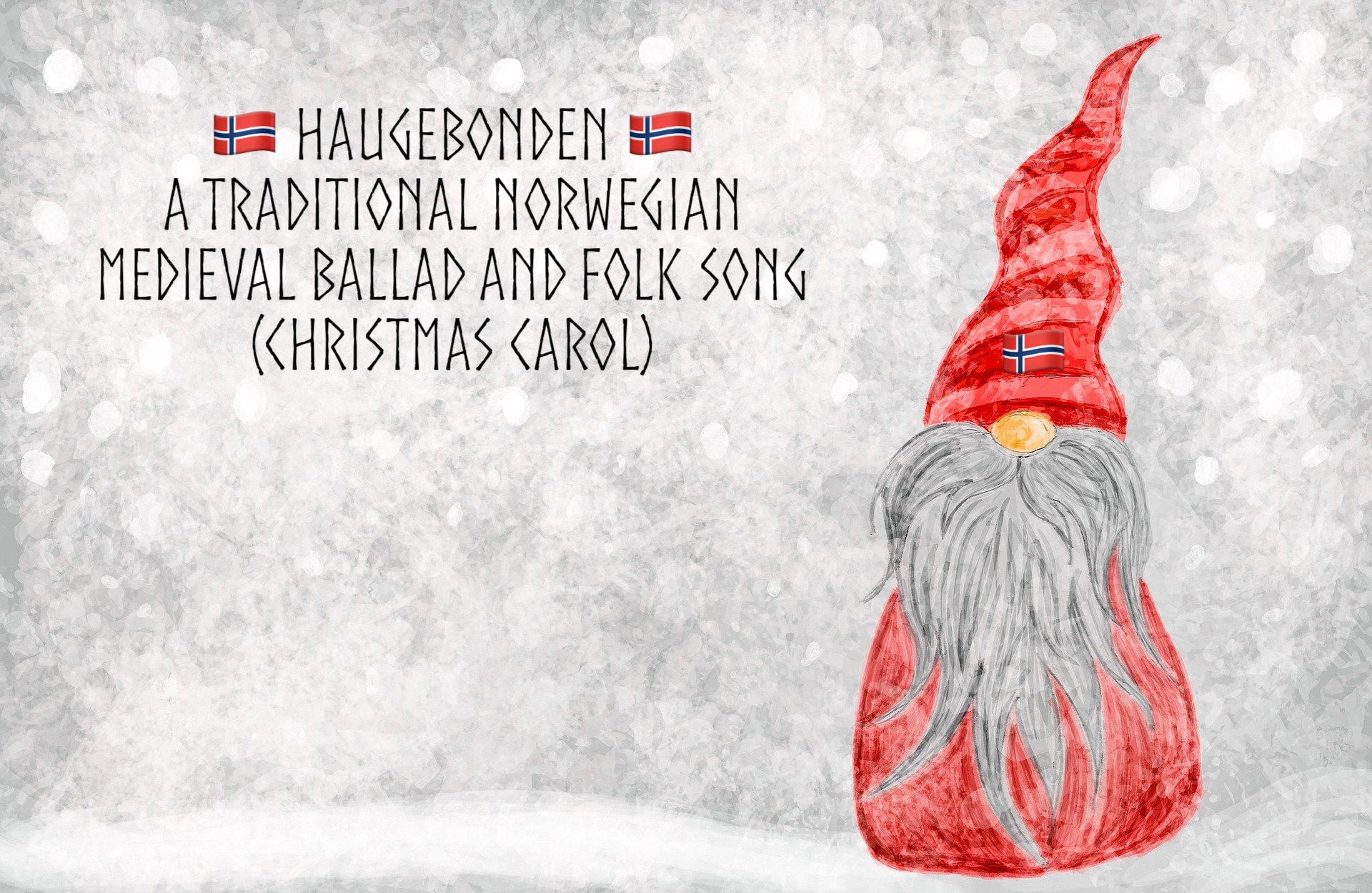Haugebonden – A Traditional Norwegian Medieval Ballad
Haugebonden (meaning mound peasant or farmer; bonde in Norwegian Bokmål can mean both aforementioned nouns while hauge means mound or pile) is the title of a traditional Norwegian medieval ballad or folk song (also performed during Christmas or Yule time as a Christmas carol) which can trace its origins to Telemark county (fylke) in southern Norway (but not only, as it is also believed to be a ballad originally stemming from a coastal village in southwestern Norway). The ballad revolves around the interaction between a Norwegian farmer and a haugebonde (a type of gnome or imp-like supernatural being living in and around a farmstead, also known as nisse or tomte; alternatively, they are also referred to as ancestral or ancestor spirits and they are rightful watchers of the rural household in the Scandinavian folklore, but the owner of the house must appease them with a warm porridge during wintertime, otherwise they can behave in a rather mischievous and even outright aggressive manner). This particular type of haugebonde can be initially perceived as a seafaring one, as he is mentioned in the lyrics of the song to use a boat of the farmer for years without actually paying rent for it to the owner. This traditional Norwegian type of boat or ship nisse in Scandinavian folklore is quite similar to the conventional fjøsnisse (i.e. barnyard gnome).

A nisse or haugebonde in the case of this traditional Norwegian medieval ballad looks pretty much like the gnome above. Image source (annotated with the Norse font and with three emojis of the flag of Norway as well): www.pixabay.com
According to the standard story recited in the lyrics of the ballad, this gnome encountered the Norwegian farmer on his way towards a nearby forest while he was searching for some sticks and twigs. He complained to the farmer that either the servants or his children (depending on the version of the ballad) were annoying him with their presence where he lived in a mound near the farmstead. Likewise, the farmer replied that he is also upset with the gnome (or haugebonde) given the fact that he used one of his ships without paying rent for it for years. Eventually (spoiler alert here, please forgive me in this particular regard), the story has a happy ending, with the two reconciling and the gnome paying his fair share for the years during which he used the farmer’s boat (by giving him beautiful handmade gifts and clothes in addition to the standard economic payment consisting in silver and gold).
The ballad is not only well known in Telemark but also around the coasts of Norway, from the south of the country (i.e. from Lista, Agder county) all the way up to Trondenes, Harstad, Troms county in the north in the Norwegian part of Lapland. In Telemark county alone, as many as approximately 100 versions of this hauntingly beautiful Norwegian folk ballad have been recorded over the passage of time. Moreover, the song is also known in the Faroe Islands, but has a different name there (i.e. Gullsteinur).
Throughout the passage of time, this ballad was performed by renowned and highly-talented Norwegian folk musicians such as Agnes Buen Garnås (also referred to as the queen of folk music in Norway; she also collaborated in the past with jazz and jazz fusion virtuoso saxophonist Jan Garbarek on a studio album of traditional Norwegian medieval songs called ‘Rosensfole’, released in 1989) or Bukkene Bruse, a Norwegian folk band consisting of very talented and skilled musicians whose lead vocalist is Arve Moen Bergset. Below you can listen to two of my most favourite recorded versions of this medieval Norwegian ballad:
Documentation sources and external links:
- The Norwegian Bokmål page on this medieval ballad on www.wikipedia.org (an article within which I also contributed in the past)
- The page on this medieval Norwegian ballad on www.snl.no (i.e. the online version of Store norske leksikon or the Big Norwegian Encyclopædia in translation)
- Personal research and knowledge

